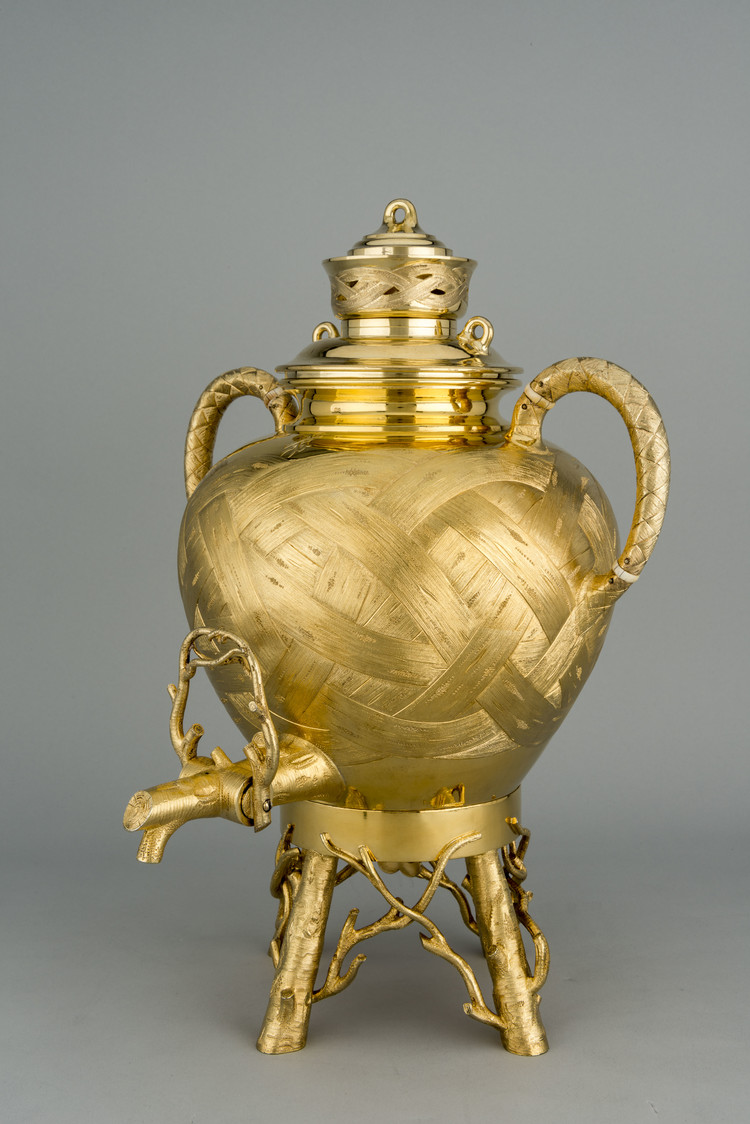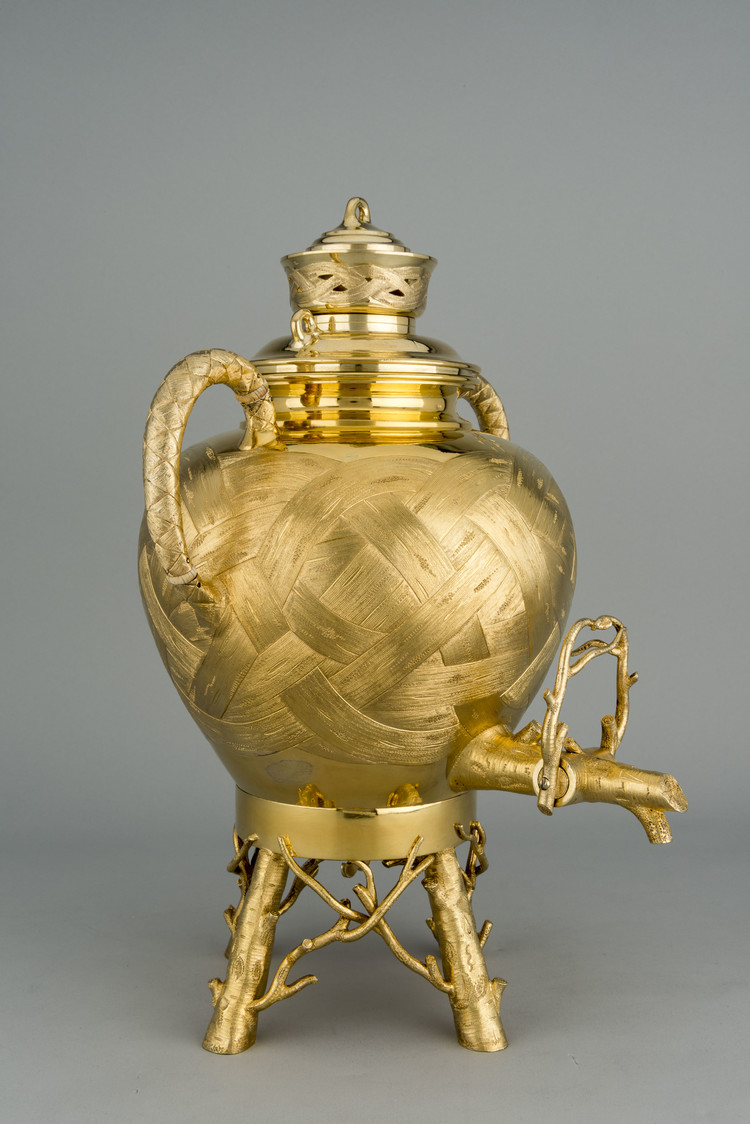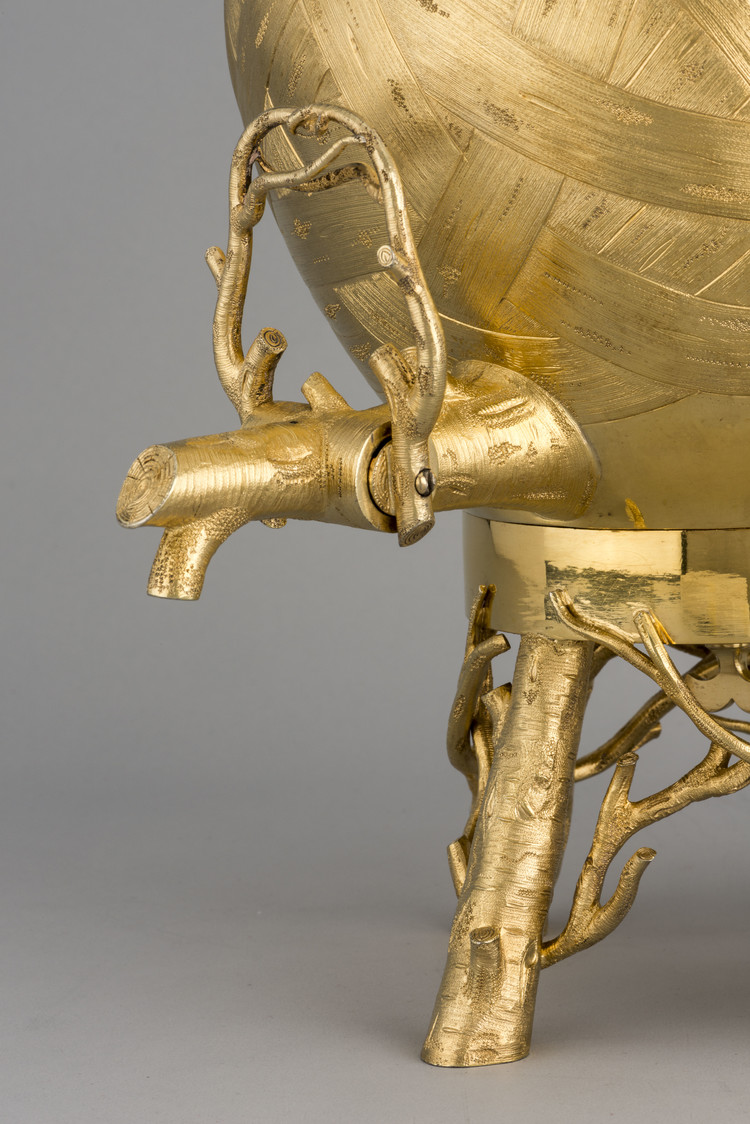The imitation technique, done in the national romantic style, advanced rapidly in the work of Russian silversmiths in the last third of the 19th century. The fabulous incusing created the impression of various materials: fabric, wood and bast fibre. The imitation genre, which developed within the “original Russian style,” was wildly popular outside of Russia and was considered an artistic rarity.
The critic Vladimir Stasov regarded these imitative flights of fantasy original examples of contemporary Russian jewelry. Along with enamel, he called the “napkins” “our last refuge in the age of eclecticism.”
One of the best examples of the imitation technique is this gilded silver samovar, seemingly woven from bast fibre, with legs made to look like short branches. It was made in 1881 in the workshop of Johan Olsonius, who worked for the Grachev brothers. It’s worth noting that the valve on the tap, known as a “branch,” was made to look like its namesake.





